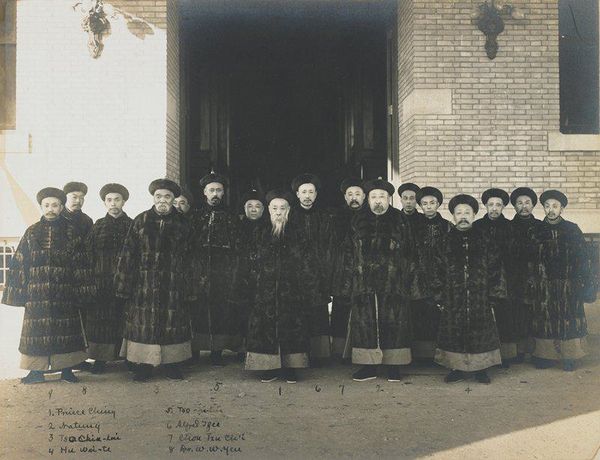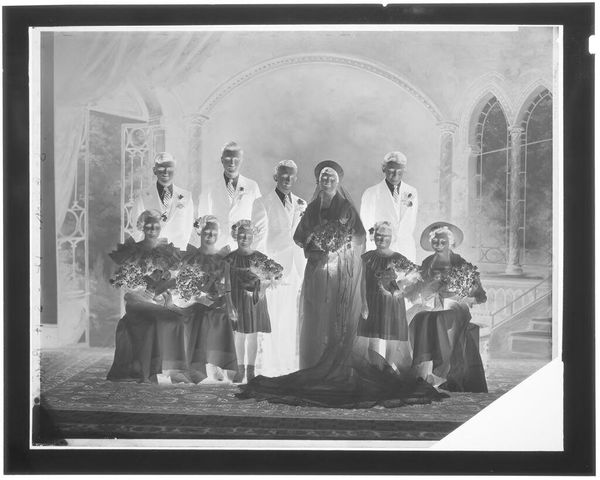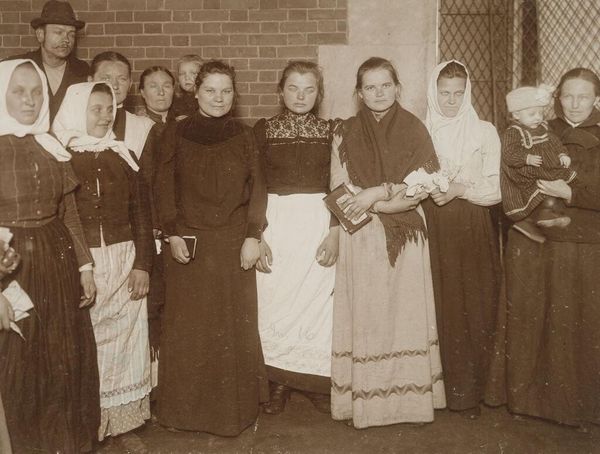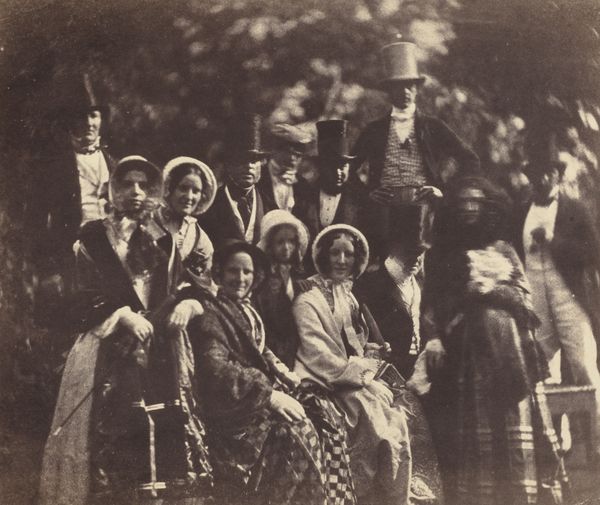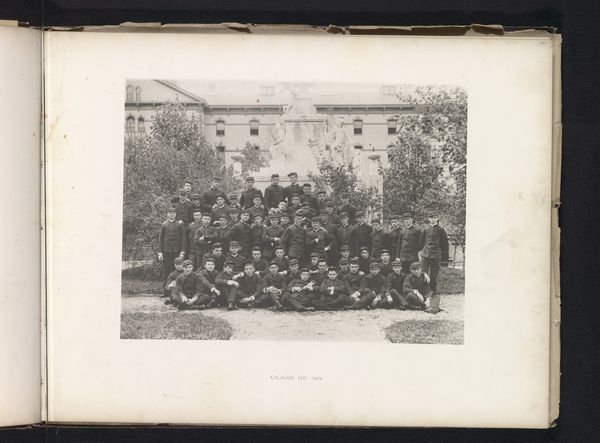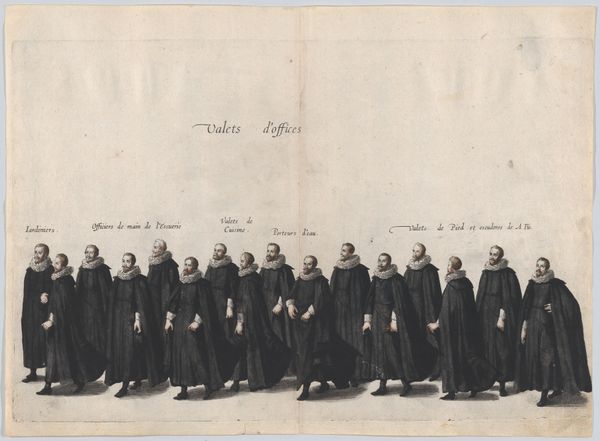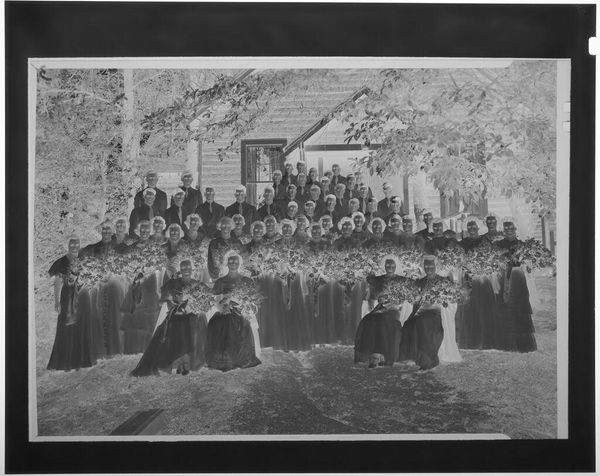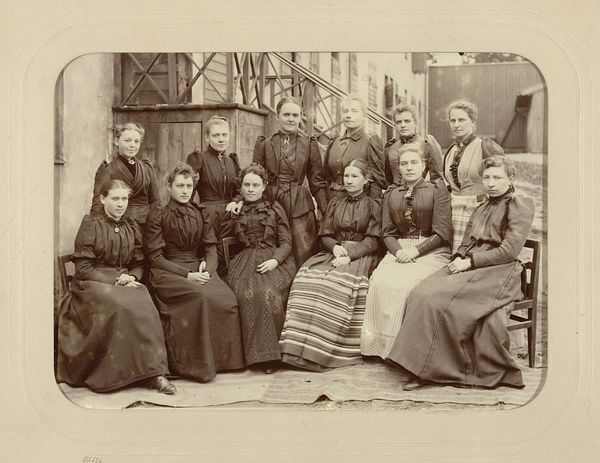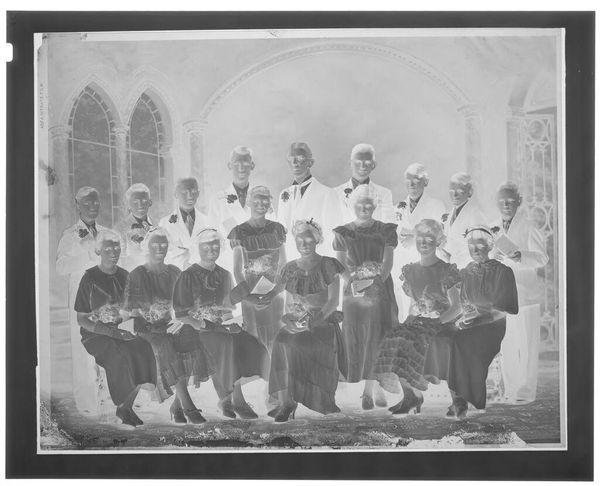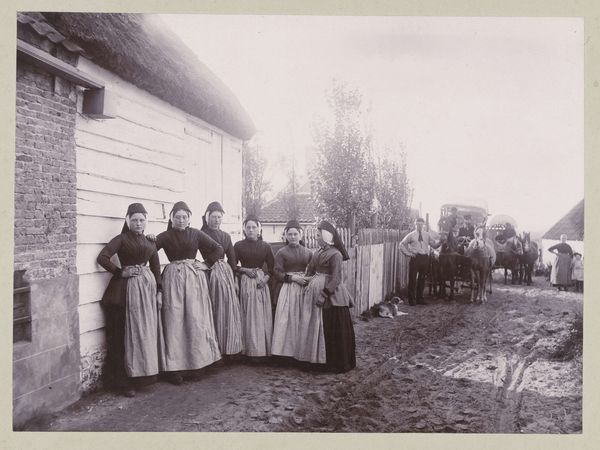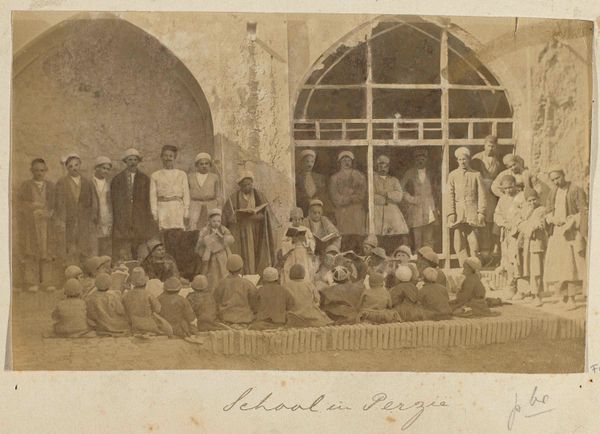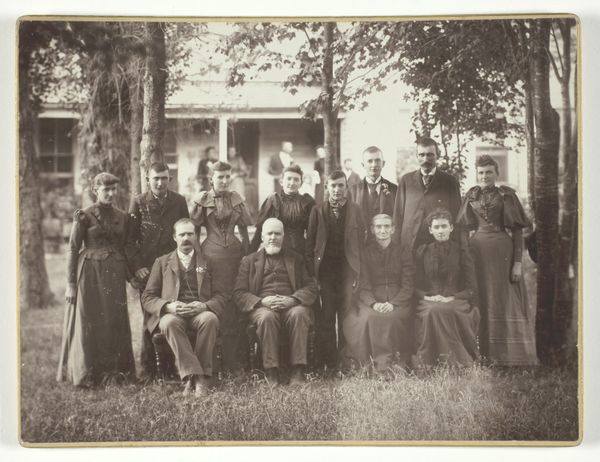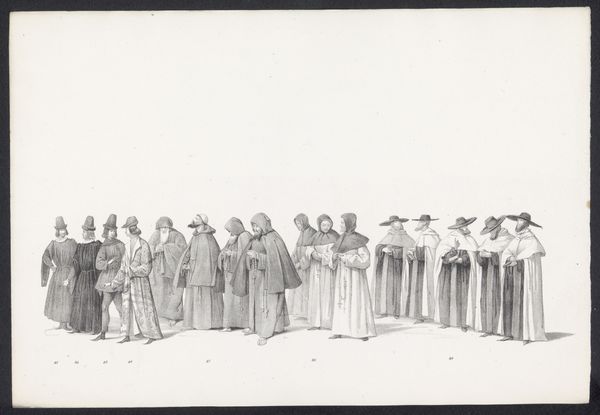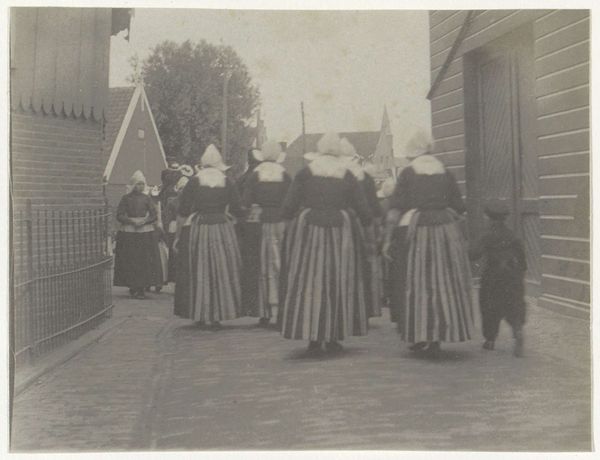
Community of Franciscan Monks, San Francisco Monastery, Cusco 1931
0:00
0:00
photography, gelatin-silver-print
#
portrait
#
black and white photography
#
black and white format
#
photography
#
group-portraits
#
gelatin-silver-print
#
monochrome photography
#
realism
#
monochrome
Dimensions: image: 17.2 × 23.2 cm (6 3/4 × 9 1/8 in.) sheet: 17.7 × 23.7 cm (6 15/16 × 9 5/16 in.)
Copyright: National Gallery of Art: CC0 1.0
Curator: Before us, we have a gelatin silver print from 1931, “Community of Franciscan Monks, San Francisco Monastery, Cusco,” captured by the insightful lens of Martin Chambi. Editor: Wow, what a study in quiet intensity. Everyone is just... there. Like figures woven right into the landscape, blending in rather than sticking out. It reminds me of a still life in its own way. Curator: In some ways, you’re right. Chambi was celebrated for this realism, as he blended local identities into this global narrative by taking a very common artistic concept from Europe, the group portrait, and restaged it through his Andean understanding of society. Editor: Interesting. I mean, all those black robes—they symbolize piety and self-denial of course, but in the picture they also become blocks, structural elements that give this photo its weight. And those white ropes that tie around their waist seem to call our attention toward it, and make me think of their commitment to God in their lifestyle, daily prayer, vows, etc. The repetition is so strong. Curator: Indeed. That visual weight, though, does not exist independently, you see the Franciscans are here connected with both their place within the ecclesiastical body and a specific locale, the San Francisco Monastery in Cusco. Consider how they appear together within the monastery garden itself. You could say this speaks to their social roles at this time. Editor: It's almost like he is showing us the layers of reality, revealing all of the actors present, monks and setting included. This kind of portrait, though simple in form, says a lot about faith. Curator: I find it also whispers about cultural continuity and negotiation. It reflects not only the visible community but also the less visible, the unseen values that knit a group together, isn't it? Editor: Absolutely. In its stoicism, the image opens this vast space for introspection on community, the human spirit, and the passage of time... such incredible depth in such simplicity! Curator: Thank you! This piece reminds us of the importance of understanding history and identity in visual representation. Editor: Exactly, so the next time you look into a photograph, consider the depth, meaning, and hidden values each might be telling.
Comments
No comments
Be the first to comment and join the conversation on the ultimate creative platform.
